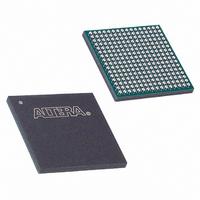EP3C5F256C8N Altera, EP3C5F256C8N Datasheet - Page 31

EP3C5F256C8N
Manufacturer Part Number
EP3C5F256C8N
Description
IC CYCLONE III FPGA 5K 256-FBGA
Manufacturer
Altera
Series
Cyclone® IIIr
Datasheets
1.EP3C5F256C8N.pdf
(5 pages)
2.EP3C5F256C8N.pdf
(34 pages)
3.EP3C5F256C8N.pdf
(66 pages)
4.EP3C5F256C8N.pdf
(14 pages)
5.EP3C5F256C8N.pdf
(76 pages)
6.EP3C10M164C8N.pdf
(350 pages)
Specifications of EP3C5F256C8N
Number Of Logic Elements/cells
5136
Number Of Labs/clbs
321
Total Ram Bits
423936
Number Of I /o
182
Voltage - Supply
1.15 V ~ 1.25 V
Mounting Type
Surface Mount
Operating Temperature
0°C ~ 85°C
Package / Case
256-FBGA
No. Of Logic Blocks
321
Family Type
Cyclone III
No. Of I/o's
182
I/o Supply Voltage
3.3V
Operating Frequency Max
402MHz
Operating Temperature Range
0°C To +85°C
Rohs Compliant
Yes
For Use With
544-2601 - KIT DEV CYCLONE III LS EP3CLS200544-2411 - KIT DEV NIOS II CYCLONE III ED.
Lead Free Status / RoHS Status
Lead free / RoHS Compliant
Number Of Gates
-
Other names
544-2423
EP3C5F256C8N
EP3C5F256C8N
Available stocks
Company
Part Number
Manufacturer
Quantity
Price
Company:
Part Number:
EP3C5F256C8N
Manufacturer:
ALTERA
Quantity:
853
Part Number:
EP3C5F256C8N
Manufacturer:
ALTERA/阿尔特拉
Quantity:
20 000
- EP3C5F256C8N PDF datasheet
- EP3C5F256C8N PDF datasheet #2
- EP3C5F256C8N PDF datasheet #3
- EP3C5F256C8N PDF datasheet #4
- EP3C5F256C8N PDF datasheet #5
- EP3C10M164C8N PDF datasheet #6
- Current page: 31 of 350
- Download datasheet (8Mb)
Chapter 2: Logic Elements and Logic Array Blocks in the Cyclone III Device Family
LE Operating Modes
LE Operating Modes
Normal Mode
© December 2009
Altera Corporation
In addition to the three general routing outputs, LEs in a LAB have register chain
outputs, which allows registers in the same LAB to cascade together. The register
chain output allows the LUTs to be used for combinational functions and the registers
to be used for an unrelated shift register implementation. These resources speed up
connections between LABs while saving local interconnect resources.
Cyclone III device family LEs operate in the following modes:
■
■
LE operating modes use LE resources differently. In each mode, there are six available
inputs to the LE. These inputs include the four data inputs from the LAB local
interconnect, the LE carry-in from the previous LE carry-chain, and the register chain
connection. Each input is directed to different destinations to implement the desired
logic function. LAB-wide signals provide clock, asynchronous clear, synchronous
clear, synchronous load, and clock enable control for the register. These LAB-wide
signals are available in all LE modes.
The Quartus
functions, such as counters, adders, subtractors, and arithmetic functions, in
conjunction with parameterized functions such as the library of parameterized
modules (LPM) functions. You can also create special-purpose functions that specify
which LE operating mode to use for optimal performance, if required.
Normal mode is suitable for general logic applications and combinational functions.
In normal mode, four data inputs from the LAB local interconnect are inputs to a
four-input LUT
carry-in (cin) or the data3 signal as one of the inputs to the LUT. LEs in normal
mode support packed registers and register feedback.
Figure 2–2
Figure 2–2. Cyclone III Device Family LEs in Normal Mode
Normal mode
Arithmetic mode
shows LEs in normal mode.
®
II software automatically chooses the appropriate mode for common
data1
data2
data3
cin (from cout
of previous LE)
data4
(Figure
Packed Register Input
2–2). The Quartus II Compiler automatically selects the
Four-Input
LUT
Register Chain
Connection
Register Bypass
clock (LAB Wide)
sload
ena (LAB Wide)
aclr (LAB Wide)
(LAB Wide)
sclear
Register Feedback
(LAB Wide)
D
ENA
CLRN
Q
Cyclone III Device Handbook, Volume 1
Row, Column, and
Direct Link Routing
Local Routing
Row, Column, and
Direct Link Routing
Register
Chain Output
2–3
Related parts for EP3C5F256C8N
Image
Part Number
Description
Manufacturer
Datasheet
Request
R

Part Number:
Description:
Cyclone III Device Data Sheet
Manufacturer:
ALTERA [Altera Corporation]
Datasheet:

Part Number:
Description:
CYCLONE II STARTER KIT EP2C20N
Manufacturer:
Altera
Datasheet:

Part Number:
Description:
CPLD, EP610 Family, ECMOS Process, 300 Gates, 16 Macro Cells, 16 Reg., 16 User I/Os, 5V Supply, 35 Speed Grade, 24DIP
Manufacturer:
Altera Corporation
Datasheet:

Part Number:
Description:
CPLD, EP610 Family, ECMOS Process, 300 Gates, 16 Macro Cells, 16 Reg., 16 User I/Os, 5V Supply, 15 Speed Grade, 24DIP
Manufacturer:
Altera Corporation
Datasheet:

Part Number:
Description:
Manufacturer:
Altera Corporation
Datasheet:

Part Number:
Description:
CPLD, EP610 Family, ECMOS Process, 300 Gates, 16 Macro Cells, 16 Reg., 16 User I/Os, 5V Supply, 30 Speed Grade, 24DIP
Manufacturer:
Altera Corporation
Datasheet:

Part Number:
Description:
High-performance, low-power erasable programmable logic devices with 8 macrocells, 10ns
Manufacturer:
Altera Corporation
Datasheet:

Part Number:
Description:
High-performance, low-power erasable programmable logic devices with 8 macrocells, 7ns
Manufacturer:
Altera Corporation
Datasheet:

Part Number:
Description:
Classic EPLD
Manufacturer:
Altera Corporation
Datasheet:

Part Number:
Description:
High-performance, low-power erasable programmable logic devices with 8 macrocells, 10ns
Manufacturer:
Altera Corporation
Datasheet:

Part Number:
Description:
Manufacturer:
Altera Corporation
Datasheet:

Part Number:
Description:
Manufacturer:
Altera Corporation
Datasheet:

Part Number:
Description:
Manufacturer:
Altera Corporation
Datasheet:












